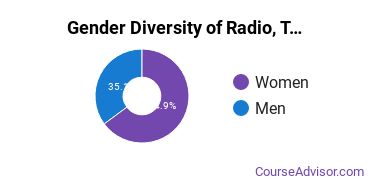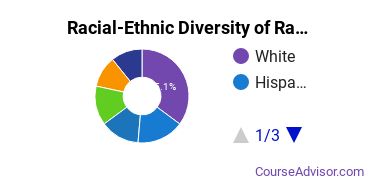Radio, Television & Digital Communication at Seattle University
If you are interested in studying radio, television & digital communication, you may want to check out the program at Seattle University. The following information will help you decide if it is a good fit for you.Seattle U is located in Seattle, Washington and approximately 7,050 students attend the school each year.
Want to know more about the career opportunities in this field? Check out the Careers in Radio, Television & Digital Communication section at the bottom of this page.
Featured Seattle University Programs
Learn about start dates, transferring credits, availability of financial aid, and more by contacting the universities below.
BA in Communication - New Media
Explore the digital frontier as it relates to today's communications strategies with this specialized online bachelor's from Southern New Hampshire University.
MS in Marketing - New Media & Communications
Explore how emerging media impacts the study of culture, relationships and messages with this online master's from Southern New Hampshire University.
Seattle U Radio, Television & Digital Communication Degrees Available
- Bachelor’s Degree in Digital Communication
Featured Seattle University Programs
Learn about start dates, transferring credits, availability of financial aid, and more by contacting the universities below.
BA in Communication - New Media
Explore the digital frontier as it relates to today's communications strategies with this specialized online bachelor's from Southern New Hampshire University.
MS in Marketing - New Media & Communications
Explore how emerging media impacts the study of culture, relationships and messages with this online master's from Southern New Hampshire University.
Seattle U Radio, Television & Digital Communication Rankings
The digital communication major at Seattle U is not ranked on College Factual’s Best Colleges and Universities for Radio, Television & Digital Communication. This could be for a number of reasons, such as not having enough data on the major or school to make an accurate assessment of its quality.
Digital Communication Student Demographics at Seattle U
Take a look at the following statistics related to the make-up of the digital communication majors at Seattle University.
Seattle U Radio, Television & Digital Communication Bachelor’s Program

The following table and chart show the race/ethnicity for students who recently graduated from Seattle University with a bachelor's in digital communication.

| Race/Ethnicity | Number of Students |
|---|---|
| Asian | 2 |
| Black or African American | 1 |
| Hispanic or Latino | 1 |
| White | 12 |
| International Students | 2 |
| Other Races/Ethnicities | 8 |
Concentrations Within Radio, Television & Digital Communication
The following digital communication concentations are available at Seattle University. The completion numbers here include all graduates who receive any type of degree in this field from Seattle University. Some of these focus areas may not be available for your degree level.
| Concentration | Annual Degrees Awarded |
|---|---|
| Media Arts | 37 |
Related Majors
Related Programs
Learn about other programs related to Seattle University that might interest you.
MS in Marketing - New Media & Communications
Explore how emerging media impacts the study of culture, relationships and messages with this online master's from Southern New Hampshire University.
Careers That Digital Communication Grads May Go Into
A degree in digital communication can lead to the following careers. Since job numbers and average salaries can vary by geographic location, we have only included the numbers for WA, the home state for Seattle University.
| Occupation | Jobs in WA | Average Salary in WA |
|---|---|---|
| Managers | 11,280 | $125,490 |
| Producers and Directors | 2,400 | $71,430 |
| Communications Professors | 600 | $60,370 |
| Media and Communication Workers | 440 | $74,510 |
References
*The racial-ethnic minorities count is calculated by taking the total number of students and subtracting white students, international students, and students whose race/ethnicity was unknown. This number is then divided by the total number of students at the school to obtain the racial-ethnic minorities percentage.
- College Factual
- National Center for Education Statistics
- O*NET Online
- Image Credit: By Joe Mabel under License
More about our data sources and methodologies.

